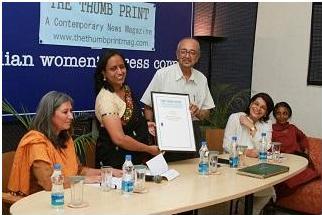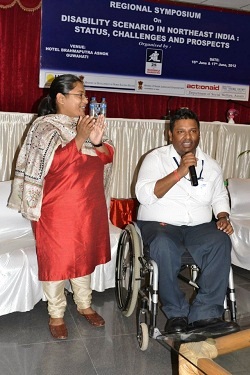In the last one week, as one watched the brute force reforms being unleashed by the government in power at the Centre, one question haunted me. Was it time for another Gandhian satyagraha nationwide?
Eighty - two years after Gandhiji launched his salt satyagraha in 1930, in direct resistance to British salt monopoly in colonial India and 92 years after the nation-wide non-cooperation movement against foreign goods in 1920-22, the legitimate question that comes up : Is India, in the autumn of 2012, faced with a similar dilemma?
But then that was 1920s and 1930s in undivided India under colonial rule . This is 2012 in independent partitioned India. Can the two Indias possibly have anything in common? The tragic answer is yes.
Vast swathes of our population, still hungry and malnourished and without minimal health care, damns us to the shocking position in the international Human Development Index (HDI) ladder at 134. Our development index is compared, in some parts of the country, to match that of sub-Saharan Africa. India stands at the bottom of all South Asian countries in human development, with the exception of war-torn Afghanistan.
The figures scream at us every day. Around 840 million people live on less than 20 rupees a day according to the Arjun Sengupta Committee report. Nearly 97 per cent of Indian workforce is in the unorganised sector and therefore outside the ambit of minimum wages, it was recently stated. Hunger, deprivation, farm suicides stalk the Indian countryside while the urban poor live on the edge with exploitative wages and a high cost of living in the cities.
On one hand you have these people whose aspirations have not been met in independent India and contrast that with our billionaire political class that seems to act only at the beck and call of transnational lending agenies and multinational corporations. A government that says Rs 32 is enough income per day for an Indian to lose eligibility for the Below Poverty Line (BPL) card, smacks of a colonial exploitative one like the British that stoked the Bengal famine. The same politicians who make this impoverished policy think nothing of opening a bottle of wine costing Rs 32,000 on an evening in a leafy star hotel in New Delhi, Mumbai or Bangalore.
By giving the green signal to FDI in multi-brand retail, India is readying the red carpet for the Walmarts and Ikeas. Having learnt virtually no caution from the scandals in the international banking sectors that have been unravelling in recent months, the government now wants to unleash FDI in pensions, insurance. The list is long of how India will be sold sector by sector. An India that is already struggling between the different aspirations of those who straddle India and Bharat, these reforms only served to make the gap even more yawning.
And the signs of the satyagraha are all there. Even as I write Mamata Banerjee has just pulled out of the UPA. But it is not the political machinations that I am really concerned about so much, as the signs from the ground in recent weeks.
The television images of villagers standing neck deep in water for 17 days and nights in Khandwa in Madhya Pradesh in a jal satyagraha was unique. The country got to see this novel protest by displaced farmers battling to save their land from going under water. Although the television cameras landed only 12 days into the agitation, once they did arrive there, the images they beamed would have forced any self respecting government, anywhere in the world, want to take cover. But not ours. It was simply heartrending to see old women and men sitting in neck deep water at the height of the monsoons being attacked by snakes, fish and worms. Never before had the story of India's big dams and the resultant displacements, been told through such stark and desperate imagery.
The effective jal satyagraha in Khandwa triggered a copycat syndrome just as Gandhi's satyagraha had done. Villagers in other places in Madhya Pradesh facing submergence from dams, also started the same manner of protest. The echoes were felt in far off Tamil Nadu where fishing communities were protesting against the Koodankulam nuclear plant. Inspired by the Khandwa farmers, they too embraced a jal satyagraha. They went into the sea and formed a human chain. They immersed themselves in sand and sat in peaceful dharna. India's poor had once against demonstrated to the world the power a Gandhi brand of non-violent civil disobedience.
But what did the state do? It unleashed brute force on the unarmed protesters and the villagers. It was as if Indians were being united in a Gandhian way to a new kind of satyagraha even as the government unleashed an anti-people 'do or die' state oppression. In Tamil Nadu almost 8,000 sedition cases have been filed against the protesters who were opposing the nuclear power plant. During Gandhi's salt satyagraha, 80,000 Indians had been arrested.
The government's hollow claim time and again that it cares for people's safety has been torn to shreds time and again. Apart from the Bhopal gas tragedy, the world's worst industrial disaster, there are other instances of government cynicism.
Heli-spraying of Endosulfan, a pesticide banned in over 84 countries, over cashew plantations in Kasargod in Kerala, was a classic example of how little our government cared about people's health. Despite the fact that endosulfan spraying had caused several neurological and genetic disorders among the people living in those villages (I had done an extensive report on NDTV from Ground Zero with case studies of those affected. Down to Earth magazine had also campaigned and written on the issue).
India was shockingly one of the countries who resisted its ban on the world stage. The Indian state and the Kerala government continued to argue for the use of endosulfan, with just one notable exception among political leaders, the fearless and honest former CPI(M) chief minister from Kerala, V S Achutanandan who openly campaigned against the pesticide. It was only last year that India was finally isolated on the Stockholm convention and found itself having to give a nod to a ban.
In modern day India the sacrifice of Irom Sharmila Chanu, otherwise known as the Iron Lady of Manipur, will remain unprecedented in India's modern history. Irom Sharmila will complete 12 years in November 2012 of her one-in-a-world hunger strike or satyagraha to demand the repeal of the draconian law - AFSPA (Armed Forces Special Powers Act) from Manipur. The 40- year old poet and civil liberties activist is being force fed through a tube by the state for the last 12 years. Talk about the cruelty of the state that is moved by nothing - certainly not a fasting non-violent protestor who also happens to be a woman.
Earlier women in Manipur did what no women would do, unless driven to utter and total desperation. Middle aged mothers and elderly grandmothers disrobed and shouted slogans in front of the Manipur Assembly demanding repeal of AFSPA.
I see Gandhi in all these protests. And tragically, I see our government, mirroring the exploitative mind set of the Colonial powers.
Find us on facebook: facebook.com/TheThumbPrintMag







































